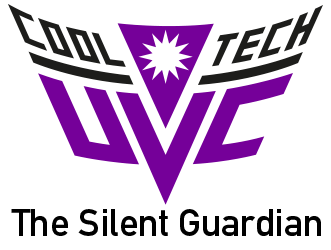Technology
Disinfection on Demand
How does UV light kill germs?
In 1877 two English scientists, W. B. Hugo Downes and Thomas Porter Blunt, found that sunlight kills bacteria.
They eventually concluded shorter light waves were a lot better at killing bacteria than longer light waves.
These days we know UV-C light target microbes' DNA and RNA, the genetic materials that control the growth of all living things. The electromagnetic energy destroys microorganisms' ability to reproduce, causing fatal photo-chemical reactions in their DNA and RNA that ultimately cause cell mutation and death.
Our UV lights harness powerful, germicidal UV-C light which means their germ-killing efficiency is as good as it gets. These UVC lamps prevent damaged microbes from repairing themselves.
- UV-C germicidal UV kills bacteria, viruses, moulds and fungi, and is not safe for humans
- UV-A and UV-B light waves can cause damage to your eyes and skin if you over-expose yourself to it
- UVC light kills 99.9% of germs at a distance of three to four metres. The time and intensity of exposure both matter, and it's important to accurately measure the dose or exposure needed. UVC intensity is measured in units of radiant power (milliwatts) per square metre.
How our UV lights work – The science bit
UV Light is further classified into 3 wavelength ranges and is measured in Nano Meters (nm). One Nano Meter is one millionth of a millimetre, in other words one-billionth of a metre. When things are this small, you can't see them with the naked eye or a light microscope. You need a special tool called electron microscope (EM) or scanning probe microscope (SEM) to detect and measure them.
- UVC 100-280nm is the traditional form of germicidal light. It can kill pathogens including bacteria fungi, spores, mould, and germs, disrupting the DNA and RNA of viruses and making them harmless. UVC LEDs are highly effective when used in the right applications for the right amount of time. (We already mentioned the dangers before so no need to do it again)
- UVB 280-315nm has some germicidal qualities, but it isn't effective enough to be used as a disinfectant. It's usually used in tanning beds.
- UVA 315 – 400nm is the kind of light you feel from the sun on your face. It isn't as effective as killing pathogens as UVC but it can still kill bacteria. UVA is also a vital source of human health and happiness
Independently tested technology
All our equipment is fully CE certified and electrically tested, and now it's available in the UK for the first time. If you'd like to talk about the potential or ask us a question, please contact us. We'll be delighted to help.
